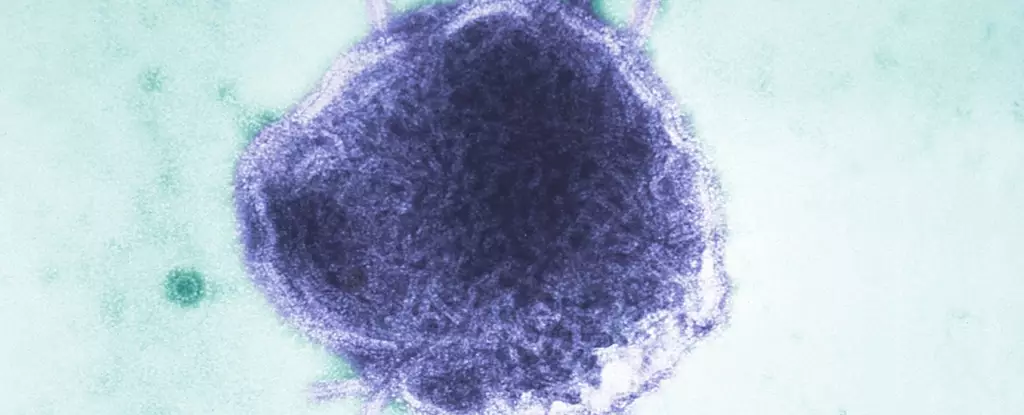For decades, measles was celebrated as a disease conquered by modern medicine—an infection relegated to the annals of history thanks to comprehensive vaccination programs. However, the recent alarming spike in cases worldwide underscores an unsettling reality: this once largely eradicated disease is making a daunting comeback. Reports indicate that regions across the U.S., Canada, Mexico, South America, and Europe are witnessing a significant surge in measles cases, marking a shift from a seemingly bright future in disease eradication to a concerning public health crisis.
In North and South America alone, cases skyrocketed to an astonishing 11 times the figures from the previous year, raising urgent questions about the efficacy of vaccination campaigns. In Europe, nations grapple with their highest measles rates in a quarter-century. The U.S. has not been spared, with a staggering 935 confirmed cases disseminated across 30 states as of May 2025. Such figures are a far cry from the elimination status the disease enjoyed in America in the year 2000. Once characterized by fewer than 100 cases annually, the U.S. has returned to a troubling narrative of outbreaks—highlighting the fragility of public health victories.
Texas: The Epicenter of Outbreaks
Among the states hardest hit, Texas emerges as a specific focal point of this crisis. As of early May, 702 cases have been reported, with tragic consequences including hospitalizations and fatalities, particularly among children. The rapid escalation of this outbreak, which started in just six counties, has now erupted into an epidemic spanning 29 counties. The impacts of such outbreaks are not merely statistical; they penetrate communities, disrupt families, and strain healthcare systems that are still grappling with the aftermath of the COVID-19 pandemic.
The highly contagious nature of measles makes it particularly daunting. An infected individual can spread the virus to 12 to 18 others, far more than other viruses, thus exacerbating the scale of potential outbreaks. The stark difference between public response to COVID-19 and the current handling of measles adds to the complexity, as vaccination hesitancy persists in some communities. The recent data indicates that failure to reach herd immunity—achieved when approximately 95% of the population is vaccinated—will only foster a comeback for this historically feared virus.
The Historical Context: Lessons from the Past
To appropriately assess the situation, it is essential to reflect on measles’ historical context. Prior to vaccinations becoming widespread in 1963, the U.S. witnessed millions of cases annually, resulting in thousands of deaths. However, successful vaccination programs transformed this grim narrative, effectively leading to the proclamation of its elimination 20 years ago. The remarkable turnaround resided in the efficacy of the Measles, Mumps, and Rubella (MMR) vaccine, which played an instrumental role in circumventing the path of disease.
Despite these achievements, complacency has slowly seeped into public consciousness. The pandemic, coupled with increasing vaccine hesitancy fueled by misinformation, has created an environment where protective measures weaken and the potential for resurgence looms large. A recent study utilizing computational models warns that if vaccination rates do not improve, the U.S. could face up to 850,000 cases of measles over the next 25 years—if not more. This harsh projection reveals an urgent need to rekindle public trust in vaccinations and ensure equitable access to immunization programs.
Restoring Trust: The Path Forward
As new outbreaks continue to emerge, one crucial step is fostering community engagement around vaccination programs. Initiatives designed to rebuild trust in the safety and efficacy of vaccines should take center stage. Health authorities, community leaders, and advocates must work collaboratively to address vaccine hesitancy rooted in misinformation while enhancing accessibility to immunizations.
Moreover, solidifying the necessities of ongoing educational campaigns can empower parents to make informed choices, combating the dangerous trends leading to lower vaccination rates. Robust outreach efforts that consider cultural nuances can further amplify vaccine uptake, lessening the susceptibility to measles across all demographics.
While measles may have been banished from public discourse for a time, the recent surge is a stark reminder of its capacity to return. To safeguard future generations from this highly infectious virus, we must unite—adopting a proactive, community-driven approach to vaccination that not only prioritizes access but also nurtures the trust of the public that has historically served as our line of defense.

